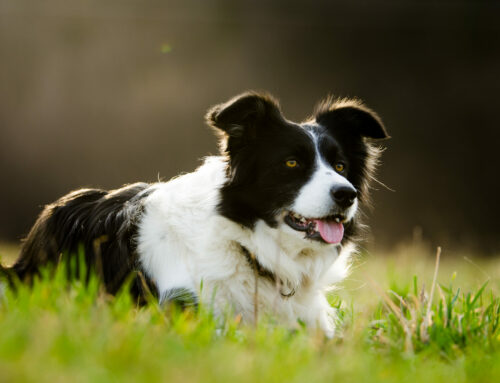Canine parvovirus (CPV2) or ‘parvo’ was first identified in 1978. It’s a highly contagious virus that spread worldwide within two years, becoming the most common cause of viral gastroenteritis in dogs worldwide, and accounting for up to 58% of cases of severe diarrhoea requiring hospitalisation in the UK. CPV2 is fatal in 91% of infected puppies without treatment, but survival rates of between 80% and 95% are possible with aggressive treatment and supportive care.
The virus is resistant to many detergents and disinfectants, and can persist indoors at room temperature for at least 2 months, and outdoors if protected for many months, possibly years. There is no treatment so prevention is key, and there is also an effective vaccine available.
Why are puppies more at risk?
Young (6 weeks to 6 months of age), unvaccinated or incompletely vaccinated dogs are most susceptible. Rottweilers, Dobermans, American Pit Bull Terriers, English Springer Spaniels, and German Shepherds seem to be at increased risk of disease. If the mother has antibodies, puppies feeding from her are protected from infection for the first few weeks of life by maternally derived antibodies (MDA). Puppies are especially at risk when the MDA starts to decline, which is when we recommend vaccination, to “top up” their protection. Pups that suffer stress, parasites, or other gastrointestinal infections may be more at risk, and be affected more severely. Adults whose antibody levels drop are also at risk, which is why regular boosters are important. While some dogs remain protected against Parvo for many years after vaccination, others become vulnerable again as little as 36-42 months after their booster.
How is it caught?
An infected dog sheds the virus in their faeces for anything from a few days to several weeks. Any dog coming into contact with this faeces is infected by ingesting viral particles. The virus then incubates for 3-7 days before signs develop. Puppies and adults with antibody protection may not show signs, as their immune system kills the virus before it takes hold. The higher the percentage of dogs who are vaccinated in an area, the lower the risk to unvaccinated dogs in that area – this is called herd immunity.
What signs may my puppy show?
Lethargy, fever and a poor appetite are the first signs. The virus replicates rapidly in the dividing cells in the intestine causing the classic signs of vomiting and haemorrhagic diarrhoea. This can lead to severe dehydration, secondary infections, and can go on to cause shock and collapse. In very young puppies with no antibody protection, the virus may attack the heart cells (myocardium), leading to myocarditis and heart disease.
How do you know it’s CPV?
Clinical signs alongside age and vaccine status may lead us to suspect parvo especially if there is a history of contact with the disease. A low white blood cell count and a low blood protein level may also be seen. Dehydration may affect the kidneys.
There is a quick in-house faecal test, but it’s only positive in just over half of all real cases. With a negative result, when we are still suspicious, we may discuss repeating it at a later time, or sending a sample off for a different, more sensitive test. If your pet has been vaccinated this will not affect the in-house test, but may affect external lab tests. As there is no specific treatment for CPV2, confirming the diagnosis does not aid treatment, so is often not vital.
Can it be treated?
Although there is no specific treatment for this virus, it’s important we act quickly if it’s suspected. Usually we advise your pet be hospitalised, isolated and barrier-nursed to keep other animals safe. Treatment can be emotionally demanding for the caregivers and owners, and financially demanding if several days of hospitalisation are required.
Placing these animals on a drip (for intravenous fluid therapy) is essential, with the addition of glucose or electrolytes depending on your pet’s needs. Medication to prevent stomach ulcers and anti-sickness drugs are often used, and pain relief is also usually essential. Research shows that feeding throughout the illness, despite vomiting, may be beneficial.
Damage to the intestinal lining leads to a breakdown of the barriers that normally prevent bacteria crossing into the bloodstream, which can lead to sepsis. Most patients with CPV2 already have a low immune cell count, and so we often use antibiotics.
A wide range of advanced treatment options have been tried, but most have failed to show a significant improvement in outcome. However, recombinant feline interferon does seem to reduce mortality rates and is widely used to artificially boost the dog’s immune system.
Intensive outpatient care in some circumstances may be possible to reduce costs or when hospitalisation is not possible, but still requires intensive treatments and frequent visits.
As parvovirus can survive for significant periods it’s essential that anything your pet has contacted is completely disinfected with diluted bleach.
What should I do if I suspect my dog has parvo?
If you recognise the signs, call us immediately. Make sure you tell us the symptoms, and whether or not they’ve come into contact with parvovirus. Most deaths happen within 48-72 hours of the symptoms, so the quicker you seek help, the greater your pet’s chances.
Keep your dog away from other dogs, ask us how to prevent its spread, and how to clean the area.
When do I get my puppy vaccinated?
If you are getting a puppy from a breeder or rescue centre, make sure they have had their first vaccination against parvo. Ask for proof (a vaccination card signed by a vet or vet nurse) and when the next dose is due. Sellers may state they were vaccinated when they were sadly not.
Contact us and we can advise the best time to vaccinate your pet.
Can I catch CPV2?
CVP2 is only infectious to dogs and wild canids (e.g. foxes), so you can’t be infected. However, you can bring the virus into your home on your shoes or clothes, for example.



